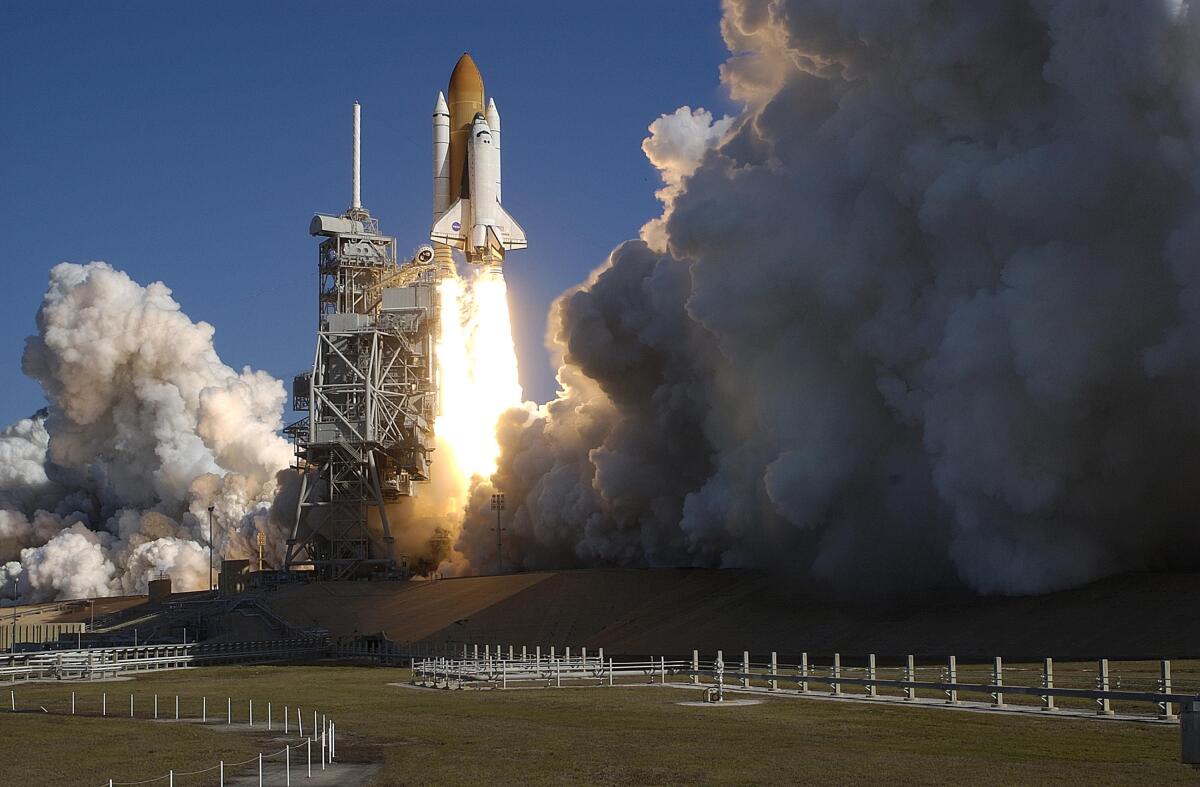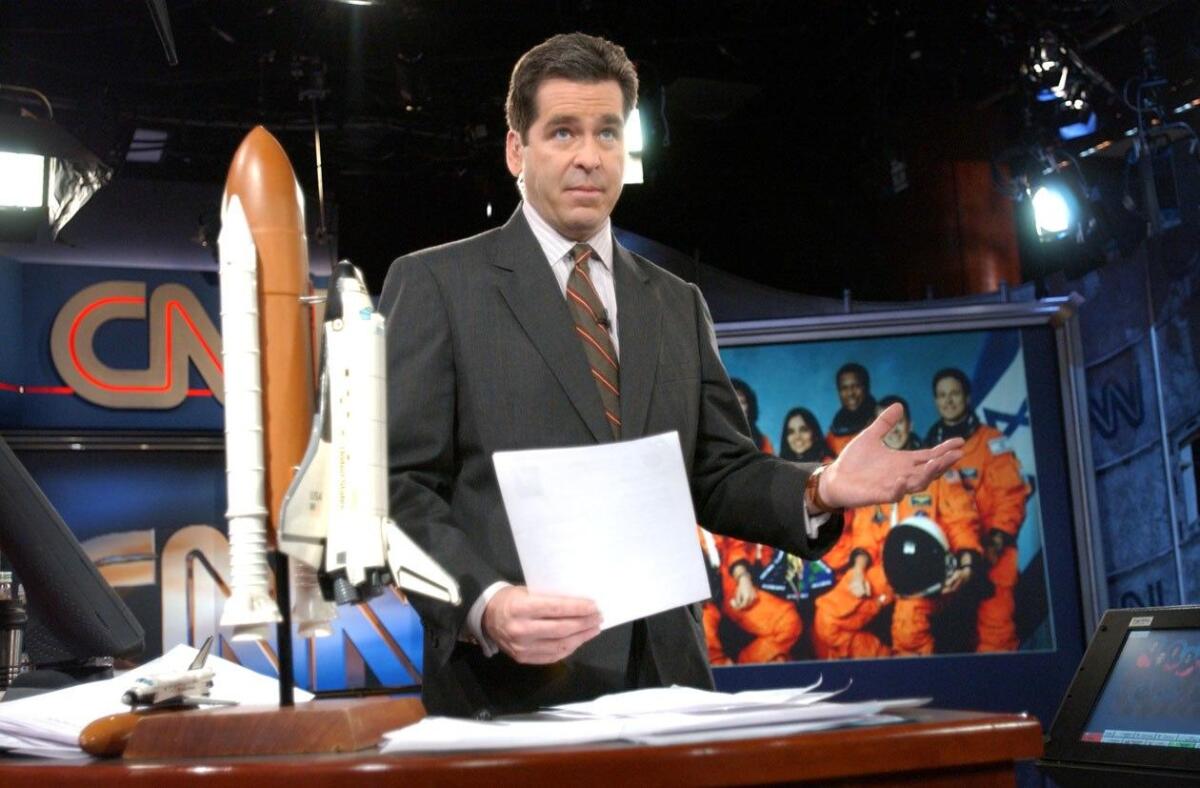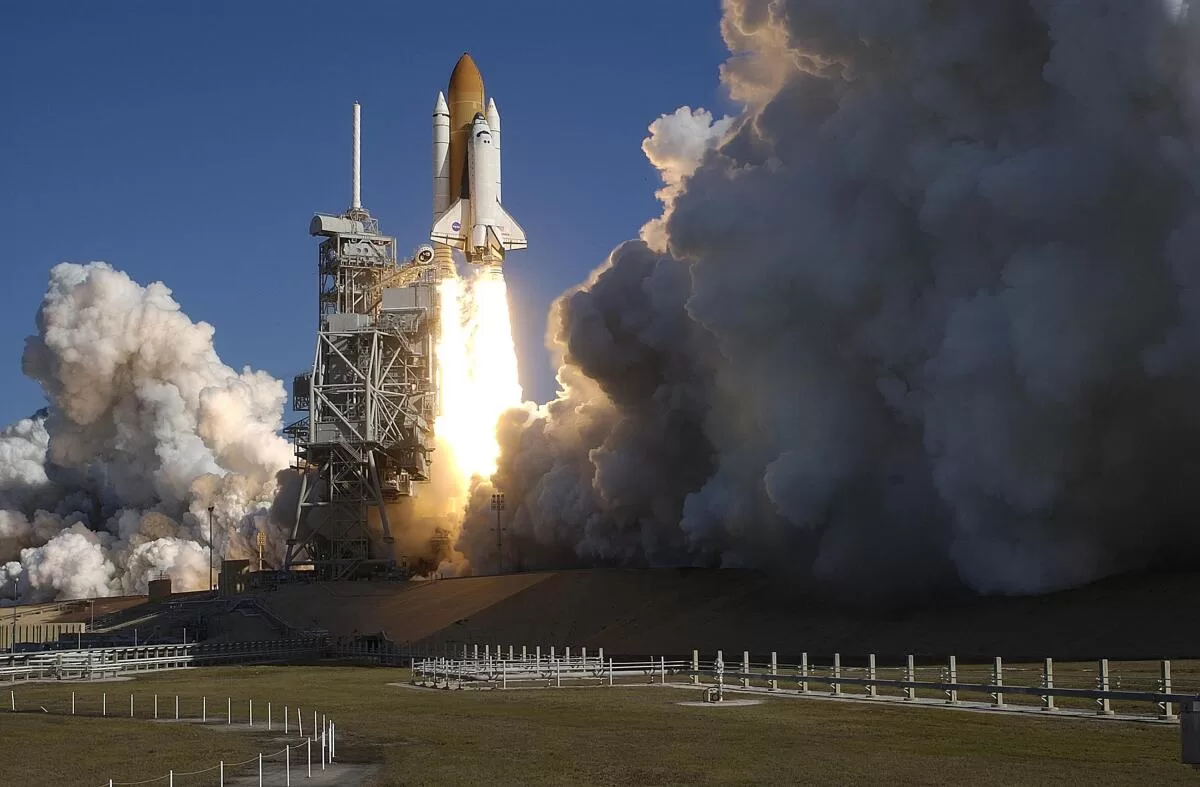O’Brien has to politely correct those grateful fans. He was on CNN’s air for 16 consecutive hours covering the demise of the space shuttle Columbia, which broke up in the sky over Texas on Feb. 1, 2003, as it reentered Earth’s atmosphere. The seven astronauts on board died after 16 days in orbit.
The 1986 Challenger tragedy was a defining moment for Gen Xers who watched it live in their classrooms. One of the crew members was a schoolteacher, Christa McAuliffe. The Columbia mission, in contrast, remains murky in the public consciousness, occurring between the Sept. 11 terrorist attacks and the 2003 U.S. invasion of Iraq.
That may be why the story plays out like a mystery in the new four-part CNN Originals series, “Space Shuttle Columbia: The Final Flight,” which features O’Brien prominently. The series, debuting Sunday at 6 p.m. Pacific, is from CNN Originals, the cable network’s much-admired production entity that is looking to make a comeback under the network’s new leadership.
“The Final Flight” is a co-production with the BBC, one of the ways CNN Originals had to adapted after being gutted during the fall of 2022. The unit, founded in 2012, was hard hit by former CNN chief Chris Licht’s budget-cutting spree during his short tenure at the network.

(Scott Andrews)
That was after the shutdown of streaming service CNN+ — nine days after Warner Bros. Discovery took over the network — had already wiped away a number of planned CNN Originals projects.
The reduction came after CNN Originals had been buying aggressively at film markets for 10 years. Since the cuts, the unit pulled back on acquisitions and halted development on projects with big names such as the three-time Emmy winner “Stanely Tucci: Searching for Italy.”
Citing the group’s success with the Oscar-winning “Navalny,” filmmakers say CNN Originals has been missed on the documentary circuit. “In a relatively short period of time they became a powerhouse,” said Betsy West, co-director of “RBG,” the 2018 Oscar-nominated film about the late Supreme Court Justice Ruth Bader Ginsburg. “We love working with them.”
But there are plans for CNN Originals to get back to turning out its own prestige projects again. Mark Thompson, the former New York Times head who took over as CNN chief last fall, said in a recent staff memo that he is increasing investment in the unit.
“It’s a good business and it is one Mark wants CNN to be back in,” said Amy Entelis, executive vice president of talent, CNN Originals, and creative development, in a recent interview.

Former CNN science correspondent Miles O’Brien reporting on the Space Shuttle Columbia in 2003.
(CNN)
Entelis said she is cautiously optimistic that she will have a full slate of originals for 2025, with an announcement for some new projects coming in the late spring.
The downsizing of CNN Originals, which includes CNN Films, was baffling to many inside the network and to much of the TV news industry because its formula worked well.
CNN historically struggled to attract audiences during lulls in the news cycle. CNN Originals addressed the problem by creating series and films that gave viewers a reason to come to the network during those slow times.
From 2014 to 2021, docuseries such as “Anthony Bordain: Parts Unknown” helped make CNN the most watched cable news channel on Sunday nights from 9 to 11 p.m. Eastern among the 25 to 54 age group most coveted by advertisers.
Today, CNN could use a boost. While its ratings have stabilized in recent months, they tumbled last year to their lowest level since 2014, according to Nielsen, putting the network far behind more politically partisan cable news competitors Fox News and MSNBC.
The unit also provided CNN with a library of programs that the company could repeat on TV and sell to streaming services and overseas broadcasters. Some of its films were released in movie theaters.
The projects won awards and attracted younger viewers who don’t typically watch cable news, which made advertising demand strong. “Navalny,” released in 2022, remains of particular relevance, with the recent death of its subject, opposition leader Alexei Navalny, in Russian prison.
While Entelis is glad CNN Originals will have a chance to return to full strength going forward, she said it will also continue to look for co-producing partners.
“We have spent the last year regrouping and have met people who want to partner, and it has allowed for some really great projects,” Entelis said. “We will continue to build on these relationships for our upcoming slate while also commissioning series of our own.”
“Space Shuttle Columbia: The Final Flight” demonstrates that compelling stories can be told without the marquee (and expensive) names that have been attached to past CNN Originals projects. The series largely depends on archival footage from NASA, which is in the public domain, and the network’s own video.
From the moment of liftoff, the documentary shows, there were questions about the impact of a piece of lightweight foam that peeled off the rocket launcher and hit the left wing of the reusable spacecraft, which had been on 27 previous missions. NASA‘s failure to act on it — even resisting the use of spy satellites to examine the damage — is a dark chapter in the space program’s storied history.
The vintage images are supplemented with new, haunting interviews of NASA employees, some of whom are speaking publicly for the first time about Columbia; and family members of the crew, including the grown children of two of the astronauts.
O’Brien, now a science correspondent for “PBS NewsHour” and a CNN analyst, provides an eyewitness account throughout the series. As the head of CNN’s six-person science unit — shut down during a previous era of cost-cutting — he was immersed in the shuttle program.
The memory is somber for him.
At the shuttle’s launch, O’Brien immediately saw on video how the debris had struck Columbia’s wing. He made some calls to his NASA sources, but never raised the issue during his CNN coverage as to how the strike might endanger the mission — a decision he deeply regrets.
“I didn’t push for that story like I should have,” O’Brien said in a recent interview. “I thought about it many times. The minute there was no communication with Houston, I knew what it was.”
The missed opportunity has troubled him for 20 years.
“In a small way I share in the guilt,” O’Brien said. “I carry it with me. It’s a hard lesson to learn as a journalist. You can’t take it at face value with a few phone calls, when you know this is bad.”
